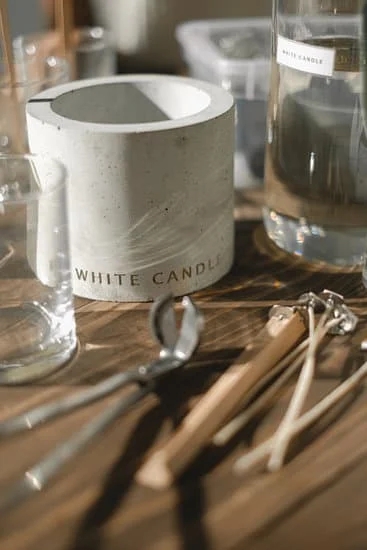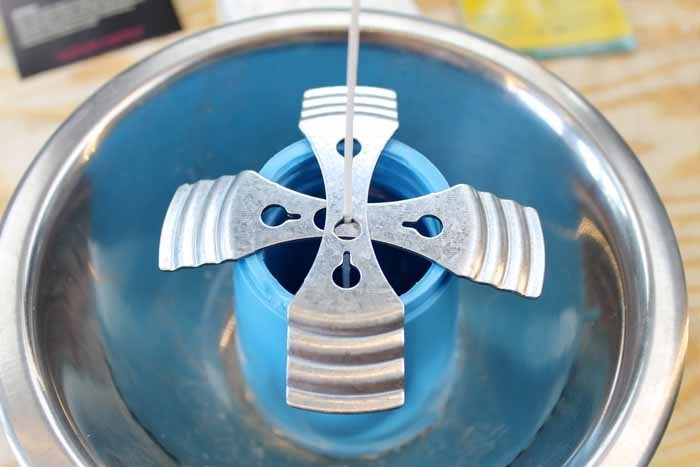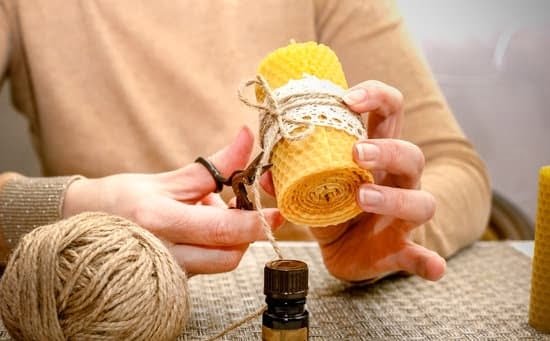When it comes to candle making, understanding the concept of frosting is crucial for achieving the desired results. So, what is frosting when candle making? Frosting refers to the white crystalline layer that can form on the surface of a candle, giving it a unique and sometimes rustic appearance. While some may see frosting as a flaw, others embrace it as a natural characteristic of soy and other waxes.
Frosting occurs due to the natural cooling process of candles, especially with soy wax. It happens when the wax cools too quickly or experiences temperature fluctuations during the setting phase. This phenomenon is not necessarily a sign of poor quality; in fact, many candle makers consider frosting as an indication of using all-natural ingredients in their candles.
Despite its polarizing nature, there are both pros and cons to frosting in candle making. Some may view it as adding character and authenticity to their candles, while others prefer a smoother finish.
Understanding how frost forms and its impact on your final product can help you make informed decisions throughout your candle making process. In the following sections, we will delve deeper into the science behind frosting, ways to prevent it, and creative ways to incorporate it into your designs.
What Causes Frosting in Candles
Frosting in candles is a natural and common occurrence that many candle makers encounter. It refers to the white, powdery layer that sometimes forms on the surface of a candle as it cools. This can be frustrating for candle makers, especially when they are aiming for a smooth and flawless finish. Understanding the science behind what causes frosting can help you take control of this phenomenon and even embrace it as a unique design element.
The main reason behind frosting in candles is the crystallization of some waxes, particularly soy wax and coconut wax, as they cool down. These natural waxes contain compounds that tend to crystallize and solidify at different rates, leading to the formation of the white frosting on the candle’s surface. In addition, temperature fluctuations during the cooling process can also contribute to frosting.
To minimize or prevent frosting in your candles, consider using additives like stearic acid or vybar when making your candles. These additives can help stabilize the wax, reduce crystallization, and create a smoother finish. Additionally, pouring your candles at the right temperature and avoiding sudden temperature changes during cooling can also help reduce the likelihood of frosting. Experimenting with different types of wax blends and additives can help you find the best combination to minimize frosting in your candles.
| Causes of Frosting in Candles | Prevention Techniques |
|---|---|
| Crystallization of natural waxes like soy and coconut wax | Use additives like stearic acid or vybar |
| Temperature fluctuations during cooling process | Pour candles at correct temperature and avoid sudden changes in temperature |
Pros and Cons of Frosting in Candle Making
Frosting in candle making refers to the crystalline white coating that can sometimes appear on the surface of candles. While some may see frosting as a flaw or imperfection, others view it as a natural and beautiful characteristic of soy wax candles. Understanding the pros and cons of frosting can help candle makers decide whether to embrace or prevent it in their creations.
Pros of Frosting
One of the benefits of frosting is that it adds character and uniqueness to the candles. The frosty appearance can give candles a rustic, handmade look, which appeals to many consumers looking for artisanal products. Additionally, frosting can create a sense of nostalgia and coziness, making the candles more inviting and charming. Some candle makers intentionally create frosting to enhance the aesthetic appeal of their products.
Another advantage of frosting is that it can actually improve the scent throw of the candle. The porous nature of frosted areas allows for better diffusion of fragrance oils, resulting in a stronger and longer-lasting scent when the candle is burned. This means that frosted candles can offer an enhanced olfactory experience for customers who enjoy scented candles.
Cons of Frosting
On the flip side, some consider frosting to be a drawback in candle making due to its unpredictable nature. Frosting can be inconsistent across batches, making it challenging to maintain uniformity in appearance. This inconsistency may not align with certain branding or design preferences, especially for those aiming for a sleek and polished look in their candles.
Frosting may also affect the burning performance of a candle. In some cases, excessive frosting can create tunneling or uneven burns, leading to wasted wax and potentially diminishing the overall quality of the candle. For those prioritizing functionality over aesthetics, minimizing or preventing frosting could be essential in ensuring an optimal burning experience for customers.
How to Prevent Frosting in Your Candles
Frosting in candles is a common occurrence that can be frustrating for candle makers. It is the white, powdery look on the surface of a candle that can affect its overall appearance. Preventing frosting is essential for those who want to achieve a smooth, professional finish in their candle making process. Understanding what causes frosting and taking proactive steps to prevent it can help ensure beautiful, high-quality candles every time.
Temperature Control
One of the main factors that contribute to frosting is temperature fluctuations during the cooling process of the candles. To prevent frosting, it is crucial to control the temperature of your wax as it cools and solidifies. Make sure to cool your candles in a draft-free environment at room temperature. Avoid placing them in areas where there are sudden changes in temperature, such as near windows or air conditioning units.
Properly Preparing Your Containers
Another tip to prevent frosting is to properly prepare your containers before pouring the wax. Ensure that your containers are clean and free from any dust or debris that could cause imperfections on the surface of the candle. Warming up your containers slightly before pouring the wax can also help minimize the occurrence of frosting.
Choosing the Right Wax
Selecting the right type of wax for your candles can also play a significant role in preventing frosting. Some waxes are more prone to frosting than others, so it’s essential to do research and test different waxes to find one that produces minimal frosting.
Additionally, using additives like stearic acid or vybar can help improve the appearance of your candles and reduce frosting. Experimenting with different wax blends and additives can help you find the perfect combination for achieving smooth, frost-free candles every time.
How to Embrace Frosting as a Design Element in Candle Making
When it comes to candle making, embracing frosting as a design element can add a unique and beautiful touch to your creations. Frosting occurs when the wax cools too quickly, creating a frosted or crystalline appearance on the surface of the candle. While some may see this as a flaw, many artisans have started to embrace frosting as part of the charm of homemade candles.
One way to embrace frosting in candle making is to use it deliberately to create a vintage or rustic look. By choosing waxes and additives that are more prone to frosting, you can achieve a desired effect that adds character to your candles. Additionally, you can experiment with different cooling techniques and temperatures to enhance the frosting effect on your candles.
Furthermore, incorporating frosting into your candle designs can give them a more natural and organic feel. This is especially popular among those who prefer eco-friendly and minimalist aesthetics. By using natural wax blends and allowing for some frosting to form on the surface, you can create candles that not only look beautiful but also align with sustainable principles.
| Embracing Frosting in Candle Making | Data |
|---|---|
| Benefit | Adds unique touch |
| Tip | Experiment with cooling methods |
| Aesthetic Appeal | Natural and organic feel |
The Best Wax and Additives to Minimize Frosting in Your Candles
When it comes to candle making, dealing with frosting can be a common challenge for many crafters. Frosting is the white, powdery coating that can appear on the surface of candles, particularly soy candles. While some may see it as a flaw, others embrace it as a natural characteristic of soy wax candles. Understanding how to minimize frosting can help you achieve the desired look for your candles.
To minimize frosting in your candles, choosing the right wax and additives is key. Here are some of the best options to consider:
- Soy Wax: Soy wax is known for its natural properties and clean burn. However, it is prone to frosting due to its composition. Look for premium soy waxes that have been specifically formulated to reduce frosting.
- Beeswax: Beeswax is another popular choice for candle making, known for its natural scent and long-lasting burn time. It has a higher melting point compared to soy wax, which may help reduce frosting.
- Paraffin Wax Blends: Blending paraffin wax with other waxes like soy or beeswax can help minimize frosting while still maintaining good scent throw and burn performance.
In addition to choosing the right wax base, adding certain additives can also help minimize frosting in your candles:
- A) Stearic Acid: Adding stearic acid to your candle formula can help reduce frosting by improving the opacity and smoothness of the candle surface.
- B) Vybar: Vybar is a polymer additive that can enhance fragrance retention and reduce frosting in candles made with vegetable waxes like soy.
- C) Microcrystalline Wax: Incorporating microcrystalline wax into your blend can improve the overall stability of the candle and reduce frosting issues.
By selecting high-quality waxes and additives that are designed to minimize frosting, you can create beautiful candles with a smooth, even finish that will delight both yourself and your customers. Experimenting with different combinations until you find the perfect balance will help you achieve professional results in your candle making endeavors.
Creative Ways to Deal With Frosting in Candle Making
When it comes to candle making, dealing with frosting can be a common challenge for many crafters. Frosting occurs when the wax cools too quickly, resulting in a cloudy or white appearance on the surface of the candle. While some may view frosting as an unwanted outcome, others have found creative ways to embrace and even enhance this natural occurrence in their candles.
Here are some creative ways to deal with frosting in candle making:
1. Embrace the Natural Look: Instead of trying to avoid or cover up frosting, consider embracing it as part of the charm of your homemade candles. The frosted look can give your candles a rustic or vintage feel, adding character and uniqueness to each piece.
2. Experiment with Different Waxes: Some waxes are more prone to frosting than others, so consider experimenting with different types of wax to see which one produces the desired effect for your candles. Soy wax, for example, is known for its natural frost-like appearance and may be a good choice if you want to enhance the frosting in your candles.
3. Use Frosting to Your Advantage: Get creative with frosting by using it as a design element in your candles. You can create texture and depth by intentionally causing frosting in specific areas or patterns on the surface of the candle. This can result in stunning visual effects that set your candles apart from mass-produced ones.
By thinking outside the box and embracing frosting as a unique aspect of candle making, you can turn what some may see as a flaw into a beautiful design feature that adds character and style to your homemade creations. Whether you choose to minimize or enhance frosting in your candles, understanding how to work with this natural occurrence can lead to successful results and truly one-of-a-kind pieces that stand out among commercial options.\.
- Embrace the Natural Look
- Experiment with Different Waxes
- Use Frosting to Your Advantage
Conclusion
In conclusion, understanding frosting in candle making is crucial for achieving successful results in your candle-making endeavors. Frosting, which is the natural crystallization process that occurs in candles, can sometimes be seen as a flaw by beginners. However, it can also be embraced as a unique design element that adds character and charm to your candles.
By delving into the science behind what causes frosting in candles, you can gain a better appreciation of this phenomenon. Factors such as rapid cooling, temperature fluctuations, and the type of wax used all play a role in the formation of frost on candles. Learning how to prevent frosting through proper cooling techniques and choosing waxes with additives can help minimize its occurrence.
Furthermore, embracing frosting as a design element opens up endless creative possibilities for your candles. Experimenting with different textures, colors, and even incorporating frosting intentionally into your candle designs can result in beautifully unique creations. Ultimately, by mastering the art of managing and working with frosting in candle making, you can elevate the quality and aesthetic appeal of your handmade candles.
Frequently Asked Questions
How Do I Stop My Soy Candles From Frosting?
One way to prevent soy candles from frosting is by pouring the wax at the right temperature. If the wax is poured too hot or too cold, it can result in frosting. Additionally, using a heat gun to smooth out any frosting after the candle has cooled can help improve the appearance.
What Does Candle Frosting Mean?
Candle frosting refers to the white, cloudy-looking patches that sometimes develop on the surface of candles, particularly soy candles. Frosting is a natural characteristic of soy wax and occurs when the wax cools too quickly or experiences changes in temperature. While it may affect the appearance of the candle, it does not impact its performance.
How Do You Make Candles Without Frosting?
To make candles without frosting, you can try using additives like Vybar or stearic acid in your soy wax blend. These additives help reduce frosting and create a smoother finish on the candle’s surface. You can also experiment with different pouring temperatures and cooling conditions to minimize the chances of frosting occurring in your candles

Welcome to my candle making blog! In this blog, I will be sharing my tips and tricks for making candles. I will also be sharing some of my favorite recipes.





